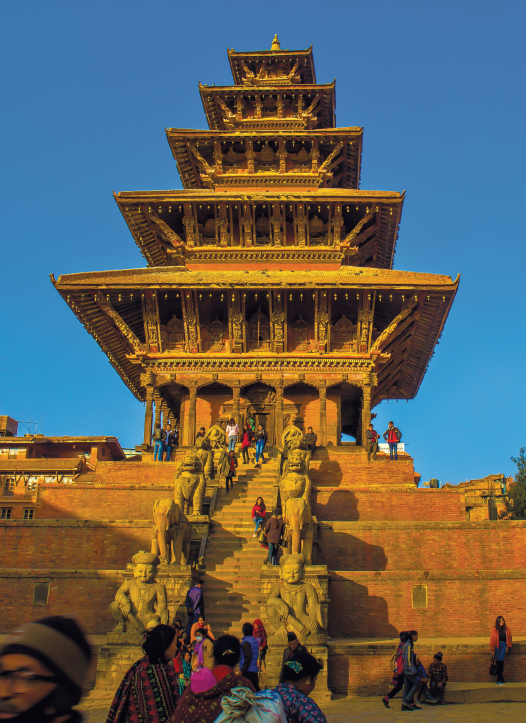The buildings were propped up by slanted wooden pillars. What once must have been its mighty walls now were in a dilapidated state. In my mind, it resembled an old man holding on to his staff. (It was the earthquake that did it.) I vividly remember what it was like to go inside this palace complex. Let me take you through this place as I recall it from my memory. In the main entrance, there stood an idol of a formidable deity, whose loyalty and strength remained mythically unparalleled. He was there to protect, warding off evil spirits. He was like a gatekeeper ensuring the invincibility of those who resided in the building. As you went in, a square courtyard would come into sight once through the entrance. It was an ominous courtyard with a bloody past. It had seen numerous intrigues, betrayals, and murders. On the left, there were a series of life-sized portraits of kings with their crowns, swords, and bejeweled attires. They unmistakably carried a domineering air around themselves, bringing to mind the remark of a great French king, “I am the state and the state is I.” These kings must have been of similar mindset.
A wooden spiral staircase greeted you as you entered the main building. It was the first of its kind in Asia. Imagine the mathematics behind it, and that our ancestors had somehow managed to discover and apply it to build it. The golden ratio would pop up in my mind as I beheld the symmetry and aesthetics of that staircase. It led to a long hall, where various artifacts, dating back to the Malla period or the Rana regime, were on display. Back in those days, this used to be the center of power and politics. Courtiers used to go out of their way to please their kings, or whoever was in power. Queens (yes, plural) used to compete using their sexuality to earn their husband’s (sometimes even generals’) favors. Princes were poisoned. Noblemen switched their loyalties with the blowing of the wind in a different direction. Whosoever lost in these games of power ended up in the dungeons, or worse. There were marriage alliances to be made. There were privileges to be strived for. There was pride to be avenged. Imagine the magnitude of human drama that unfolded within these walls that now we learn as history.
If you gazed outside, there were fantastic towers protruding out of the ground and reaching for the sky. Each of them was unique with their exquisite wooden carvings and their many latticework windows. All I have left of this place are these memories. At present, things have much changed. Of course, there is its illustrious past, but what has become of it now? It is nearly in ruins. As a child, I loved visiting this place (they used to charge Rs.25 for a ticket) but now it has been closed after the earthquake. Will it turn into a large heap of debris in the near future? I would hate it if it ceased to be a popular destination for school excursions. I would hate it if kids in Kathmandu would not be able to experience this place. This monument is a proof that a thousand years ago our ancestors were not living in caves. We had a full-blown civilization, that too with impressive advancements in math, architecture, and religious philosophy. Now, the old man with his staff screams, “Save Me!” It is minutes away from annihilation.











